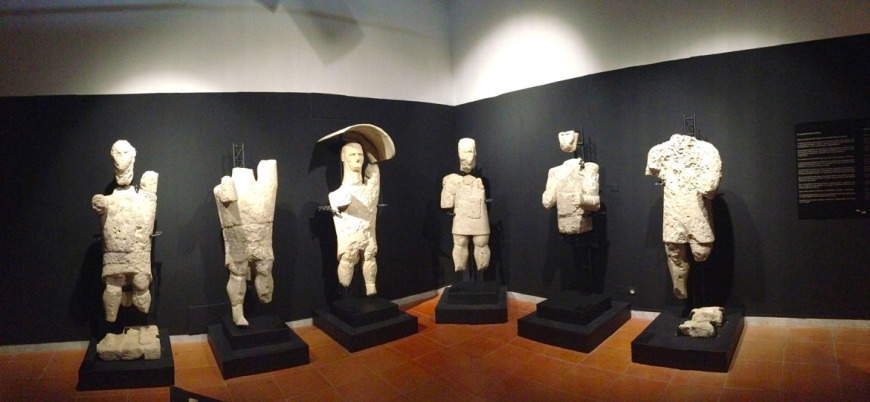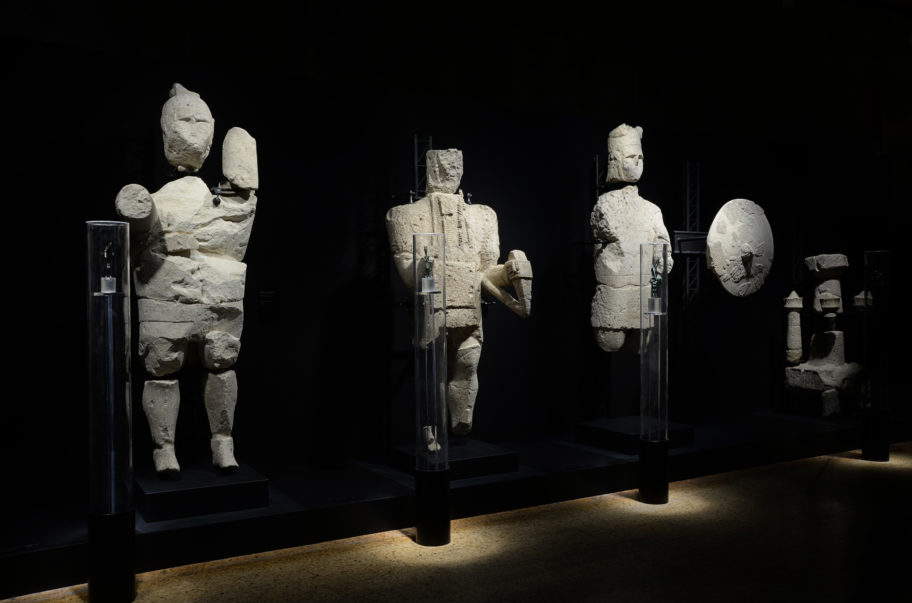A few hours ago an end was put to the tormented affair of the Monte Prama Foundation, wanted by Minister Dario Franceschini in 2017 to manage, in spite of its name, all the cultural assets of the Municipality of Cabras (in addition to the Mont’e Prama site, also thearchaeological area of Tharros, thehypogeum of San Salvatore, and the Tower of San Giovanni di Sinis). The Foundation was formally created only today, July 1, 2021, after four years of negotiations and discussions. “The valuable collaboration between the Ministry of Culture, the Region of Sardinia and the Municipality of Cabras,” said Minister Franceschini at the signing, “has made it possible to seize this important result, which offers a fundamental tool for the enhancement of one of the greatest testimonies of an ancient Mediterranean civilization. The Giants are a great opportunity for Sardinia and for our country, and I am sure they will turn the world’s heads.” In fact, the signing comes after years of tense discussions (rather than collaboration) culminating in the political-administrative clash last February and March, when the mayor of Cabras, Andrea Abis, refused to grant the local Soprintendenza access to the Civic Museum: the first citizen feared that the statues that the Soprintendenza wanted to take temporarily to Cagliari for restoration would not return, as explained in a previous article on these pages.
But the situation was unblocked a few days ago. On Friday, the Cabras city council voted to approve the creation of the foundation, after the mayor guaranteed that the statutes put in black and white that the statues will remain in Cabras. Ironic that, in roughly the same hours, Minister Franceschini, announcing the birth of the Foundation, proposed "a world tour" for the Giants of Mont’e Prama. Beyond words, concretely the Foundation’s Board of Directors will be composed as follows: a president chosen by the Ministry and agreed with the Region, two other representatives of the Ministry, two members chosen by the Region, and finally as vice-president and sixth member of the Board the mayor of Cabras.
 |
| The Giants of Monte Prama at the Museum of Cabras |
There could be no shortage of controversy at the end of such a multi-year clash. As expected, municipal oppositions rose up. For Councilman Antonello Manca, “the Municipality of Cabras has a strongly minority role within the Foundation’s board of directors,” and again “the Ministry instead of being above the parties has not guaranteed a special status for our municipality.” A second board member, Gianni Meli, noted at the time of the vote that in the bylaws “the board deliberates by a majority of the members present. In case of a tie vote, that of the chairman or his deputy prevails. This form of board totally with a ministerial majority, this situation completely excludes the Region of Sardinia and the Municipality of Cabras from management.” The local PD, which expresses the mayor, however, came to armor the choice: “We are convinced that the Foundation represents a unique opportunity for Cabras in light of the contribution it will be able to make, in terms of resources and tools, so that our territory can aspire to become a center of tourist attraction on an international scale. We therefore believe that such a prospect is worth far more than a seat on the board,” explained Secretary Salvatore Madau. “We believe that this matter should not have been a reason for fragmentation and political opposition between majority and opposition.” But the composition of the BoD offers the idea of an exquisitely political dispute, consummated over appointments and control thereof.Thefirst BoD, in office for three years and announced to the press today, will see as chairman journalist and former director of theUnione Sarda Anthony Muroni (among the main proponents of the foundation’s birth in recent years); as representatives of the Ministry the historian of ’art Patricia Olivo, regional secretary of the Ministry, and the musician Paolo Fresu; as representatives of the region the teacher Graziella Pinna Arconte and the doctor and former mayor of Cabras Efisio Trincas (former secretary of the Sardinian Action Party, which governs the region); and finally the current mayor of Cabras, Andrea Abis. Striking is the absence of archaeologists and scholars who have dealt with Cabras’ cultural heritage over the decades, from the Mont’e Prama site to Tharros. The Municipality of Cabras turns out to be the least represented of the three, even though the sites involved are civic. Whether or not this ministerial-driven foundation formula will benefit the management of the local archaeological heritage, time will tell. But at the end of this story, or at least the first part of it, one cannot help but notice its peculiarities.
First and foremost, the unprecedented institutional clash that characterized this gestation, with the (Roman) Ministry and the Region on two different camps, with the local Superintendencies deprived of any debate; with the small municipality of Cabras forced to resist ministerial pressure and then ended up accepting a compromise agreement; a completely public participation foundation, a large board, and a large ministerial majority in a context in which none of the archaeological sites and museums involved turned out to be ministerial, but municipal or local diocese property. This is the first time since 2004, that is, since the state began creating foundations to manage public archaeological sites and museums, that there has been this level of confrontation. Not least because the bulk of the precedents involved state museums and sites being assigned to a foundation, while here the assets belonged to third parties.
 |
| The Giants of Monte Prama at the National Archaeological Museum in Cagliari in 2017 |
The precedent set does not only concern Sinis nor Sardinia, and it prompts some thoughts: can a central state institution decide to create a foundation to manage communal heritage, leveraging its persuasive (economic and political) power? Because now, with this new institution, it will certainly be easier to obtain both public and private funding, with the difference that the management of the same will no longer be the responsibility of the local authorities but precisely of the foundation. The management of the funding, and the management of the assets themselves.
The Corte dei Conti in early 2021 published a lengthy examination, starting with the case of Matera 2019, explaining the critical issues related to the allocation of public assets to a foundation, an allocation that is configured as perpetual, despite the critical nature of these entities with a management “certainly less regulated and accountable despite the fact that these entities base their activities on a totalizing use of public resources.” They suggested avoiding the creation of Foundations without adequate reflection. But in this case they preferred to force the hand, even in the face of the territory’s misgivings. It will therefore be up to the abilities of the territory itself, and the people called to represent it in this new body, to ensure that the Monte Prama Foundation responds to public and community interests. For example, by having the heritage remain in place, avoiding delicate world tours, for starters.
Warning: the translation into English of the original Italian article was created using automatic tools. We undertake to review all articles, but we do not guarantee the total absence of inaccuracies in the translation due to the program. You can find the original by clicking on the ITA button. If you find any mistake,please contact us.